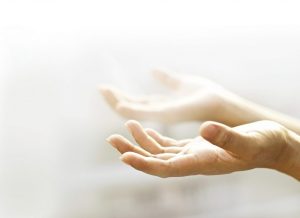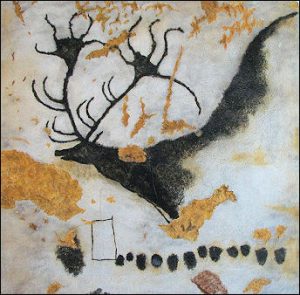 Our Moving into Meditation class explored forgiveness. We drew inspiration from Jack Kornfield’s book, No Time Like the Present: Finding Freedom, Love and Joy Right Where You Are. In Chapter 6, Forgiveness, Jack explores the various ways past experiences weigh us down and color our perception. He suggests that we intentionally cultivate an all- encompassing awareness to include ourselves and others in our circle of loving kindness. Forgiveness is a lifelong healing practice. Poet Jane Hirshfield describes the letting go that living demands of our hearts. Living is for-giving.
Our Moving into Meditation class explored forgiveness. We drew inspiration from Jack Kornfield’s book, No Time Like the Present: Finding Freedom, Love and Joy Right Where You Are. In Chapter 6, Forgiveness, Jack explores the various ways past experiences weigh us down and color our perception. He suggests that we intentionally cultivate an all- encompassing awareness to include ourselves and others in our circle of loving kindness. Forgiveness is a lifelong healing practice. Poet Jane Hirshfield describes the letting go that living demands of our hearts. Living is for-giving.
Guided Relaxation
 Allow your eyes to close and your breath to be natural and easy. Let your body and mind relax. Breathing gently into the area of your heart, let yourself feel all that is there . . . quietude . . . openness . . . sensitivity . . . apprehension . . . fatigue . . . peace . . . whatever your heart is expressing . . . let yourself be touched . . . Breathing softly while images and sensations begin to surface in your awareness . . . and notice the lens of your awareness . . . Is it clear? Is it clouded? . . . Is it open? Is it closed? . . . Is it looking for something particular? Are you recreating or replaying the past? You can let that be . . . and notice how the past colors the present . . . in your heart . . . your body . . . . your mind . . .
Allow your eyes to close and your breath to be natural and easy. Let your body and mind relax. Breathing gently into the area of your heart, let yourself feel all that is there . . . quietude . . . openness . . . sensitivity . . . apprehension . . . fatigue . . . peace . . . whatever your heart is expressing . . . let yourself be touched . . . Breathing softly while images and sensations begin to surface in your awareness . . . and notice the lens of your awareness . . . Is it clear? Is it clouded? . . . Is it open? Is it closed? . . . Is it looking for something particular? Are you recreating or replaying the past? You can let that be . . . and notice how the past colors the present . . . in your heart . . . your body . . . . your mind . . .
Here in these moments of presence the burdens and emotions we carry are revealed . . . We slow down long enough to feel the weight . . . even the pain of keeping our hearts closed. We explore the nature of our hearts’ burdens and learning the ways they influence our self-perceptions . . . our assumptions about others . . . the beliefs we have about the world. We create the conditions for this learning, this self-awareness. If we are lucky we can free ourselves by letting go of what we carry and loosening the tight views that constrain our living . . .
 Sometimes it is a matter of forgiveness . . . asking forgiveness of others . . . offering forgiveness to ourselves . . . or to those who have harmed us. This healing work is the work of a lifetime. We are blessed when life conditions allow us to truly, deeply feel the knotted expressions of anger, fear and regret . . . when we can patiently unravel these knots with compassion for ourselves and others.
Sometimes it is a matter of forgiveness . . . asking forgiveness of others . . . offering forgiveness to ourselves . . . or to those who have harmed us. This healing work is the work of a lifetime. We are blessed when life conditions allow us to truly, deeply feel the knotted expressions of anger, fear and regret . . . when we can patiently unravel these knots with compassion for ourselves and others.
In his book, How to Wake Up, Jack offers a contemplative practice in which we make offering forgiveness and asking for forgiveness a part of our lives. We can cultivate an all encompassing awareness that includes ourselves and others and be moved by what this awareness has to teach us. Jack writes:
Forgiveness cannot be forced; it cannot be artificial. You can simply set the intention to forgive, continuing to practice and let the words and images work gradually in their own way. In time, you can make forgiveness meditation a regular part of your life, letting to of the past and opening your heart to each new moment with a wise lovingkindness.
 What a relief to learn that we don’t have to be defined by our past – especially knowing that each time we remember a story it changes – its truth begins to erode. Jack goes on to observe that . . . “identity is not limited to personal biography or your mind’s ideas about itself. . . . You are timeless. Whenever you forget this and identify with your mind’s stories about who you are, look again.”
What a relief to learn that we don’t have to be defined by our past – especially knowing that each time we remember a story it changes – its truth begins to erode. Jack goes on to observe that . . . “identity is not limited to personal biography or your mind’s ideas about itself. . . . You are timeless. Whenever you forget this and identify with your mind’s stories about who you are, look again.”
In our practice we can learn to see beyond the roles we’ve learned to play in life. Through all encompassing awareness we can experience our part in a much bigger whole; we can sense the universality of our personal struggles. In honoring our true feelings we can remember that we are so much bigger than anything that happens to us. Compassionate awareness blossoms in the fullness of time. It helps us to feel our pain and the pain of others and to discover ways to move on. Courage and clarity gradually illuminate the path forward. We acknowledge what is wrong and we don’t forget or condone the harm. We come to understand the conditions gave rise to the wrongdoing.
 We include ourselves in the circle of forgiving – we look honestly at the ways we have caused harm. In the process of understanding our own actions and holding the pain we’ve caused others, we can forgive. Jack observes: “Without mercy for ourselves, we will always live in exile.” Our continued growth and healing – like all living beings – ripens over time. This ripening is the freedom we experience in letting go.
We include ourselves in the circle of forgiving – we look honestly at the ways we have caused harm. In the process of understanding our own actions and holding the pain we’ve caused others, we can forgive. Jack observes: “Without mercy for ourselves, we will always live in exile.” Our continued growth and healing – like all living beings – ripens over time. This ripening is the freedom we experience in letting go.
Buddhist meditation teacher, Ajahn Chah, taught “If you let go a little, you have a little peace. If you let go a lot, you have a lot of peace. If you let co completely, you are truly free.” Letting go is key. But the term letting go can be confusing. We think it means to pushing the past away or rejecting it somehow. Jack suggests that “letting be” might be a better way of expressing the release. He describes the experience: “ . . . like the chord that completes a song.”
In her poem, The Weighing, Jane Hirshfield evokes the experience of accepting our part in the cycle of life in which we let go.
The heart’s reasons
seen clearly,
even the hardest
will carry
its whip-marks and sadness
and must be forgiven.
 As the drought-starved
As the drought-starved
eland forgives
the drought-starved lion
who finally takes her,
enters willingly then
the life she cannot refuse,
and is lion, is fed,
and does not remember the other.
So few grains of happiness
measured against all the dark
and still the scales balance.
The world asks of us
only the strength we have and we give it.
Then it asks more, and we give it.
